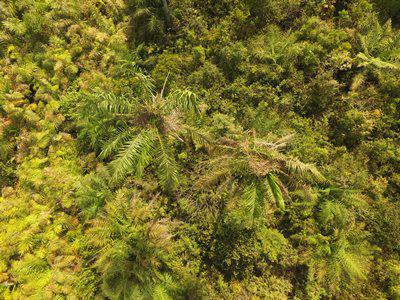Rosa Garriga
Other projects
13 Mar 2013
Study of Chimpanzee Populations (Pan troglodytes verus) Using Camera Traps in Fragmented Habitats in Sierra Leone
This follow-up project will build on the knowledge of the current situation of wild chimpanzees sharing habitats with humans in Sierra Leone so we can assess likely outcomes that would benefit farmers and better protect these remaining populations of chimpanzees.

Chimpanzees caught on camera trap.
This project is a follow-up study of the chimpanzee population living in a non-protected and human modified habitat in the Moyamba district in Sierra Leone. The habitat in which chimpanzees are living is a mosaic of agricultural fields in different stages of fallow devoid of forest cover. Chimpanzees feed on crops, nest and feed on oil palms and share the land with local people. We want to determine the local chimpanzee population size, composition and distribution, evaluate the impact of its presence on people's attitude and behaviour towards chimpanzees and develop a participative approach to their effective protection.

Aerial view of chimpanzee nests in oil palms.
In Sierra Leone, forest covers approximately 38% of the land area, the majority is modified natural forests and only 4.5% is protected, yet chimpanzees are widespread across the country and live in close contact with humans. Crop foraging by animals is a concern for small-scale subsistence farmers in a country where two thirds of the population depend on the agricultural sector and predominantly practice slash and burn farming. Previous studies carried in the Moyamba and Port Loko districts showed that crop raiding by animals is a serious issue for farmers. Even though farmers regarded chimpanzees as destructive animals, they were not considered the main culprits. The tolerance level depended upon whether the chimpanzees' home range coincided with the farmers' land. Through further research, we will improve our understanding of wild chimpanzee demographics and dynamics living in such human modified habitats and evaluate the options for enhancing their protection and ensure their survival. We also aim to assess how farmer’s' perceptions mirror reality and explore possible mitigation strategies to reduce the level of crop raiding. It is important to find solutions that would benefit farmers as well as protecting chimpanzees alike to ensure farmers tolerance towards them and prevent retaliatory killings.
The prospective study area covers an area of approximately 100 km2 with around 50 human settlements. We will use a combination of methods which will include:
• Semi-structured interviews
• Camera traps
• Unmanned aerial vehicles (drone): This will serve to assess the efficiency of this new technology to estimate chimpanzee abundance according the chimpanzee nest occurrence.
These data will be compared with those obtained from the camera traps.